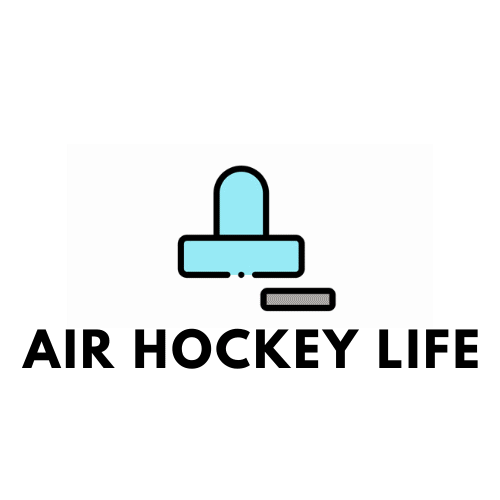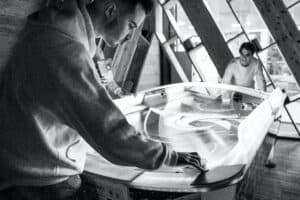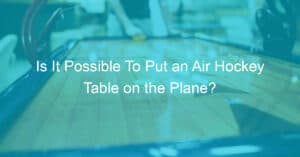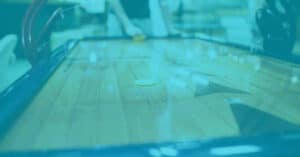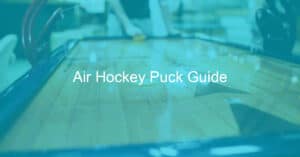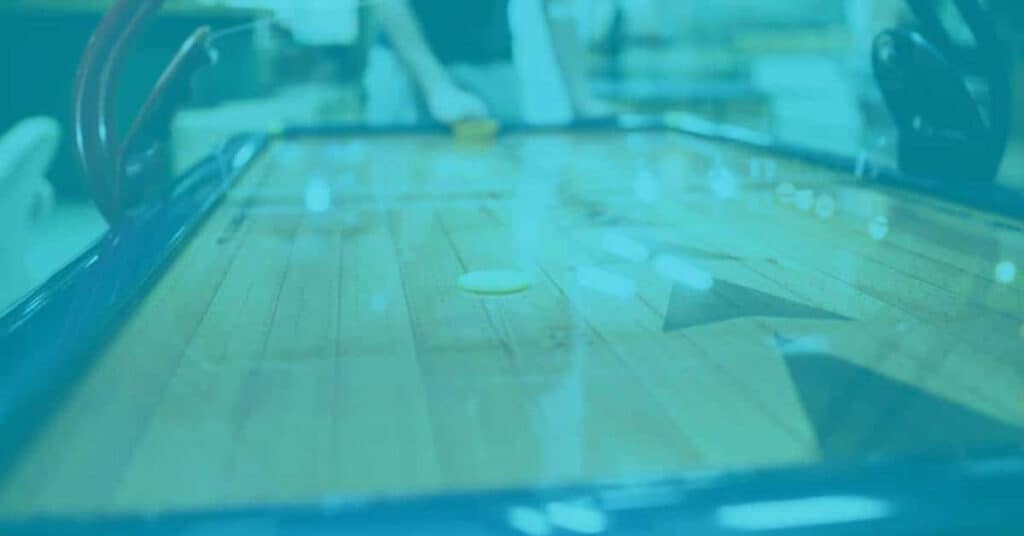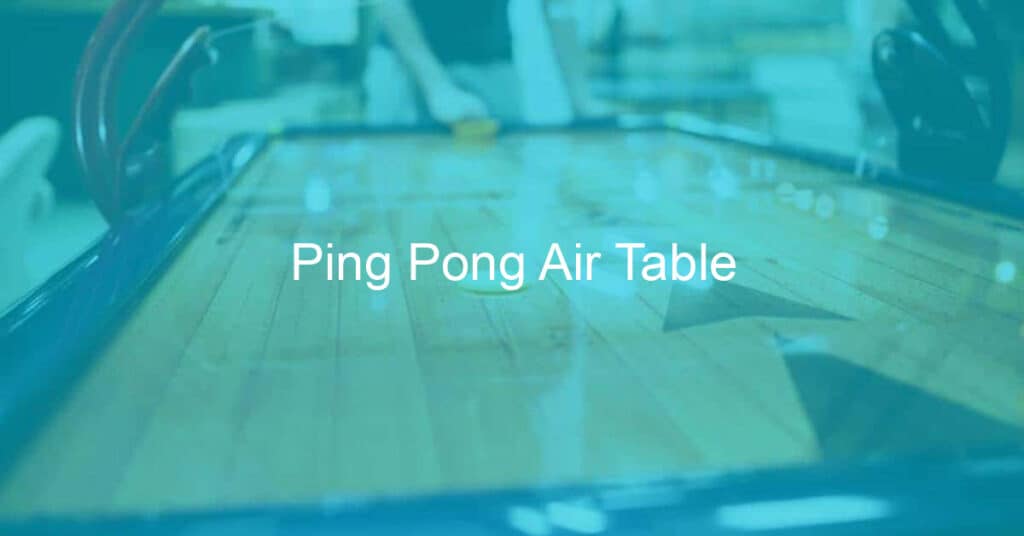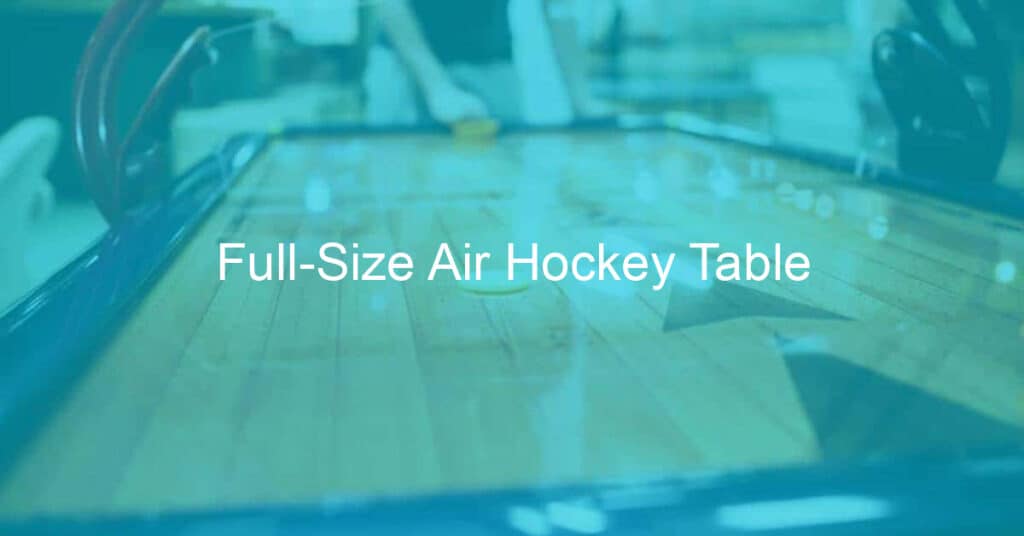You probably don’t think about the physics of air hockey very often, but have you ever wondered how it works? The science behind this popular game is actually pretty interesting. Here’s a look at the physics of air hockey and how it keeps the puck floating on a cushion of air.
How does air hockey work?
Air hockey is a game in which two players compete against each other by pushing air-floated, lightweight pucks around a flat table top that has vents for creating an air cushion to keep the puck afloat.
The goal is to score points by shooting the puck into the opponent’s goal and blocking shots from entering your own.
To accomplish this, each player uses various maneuvers such as striking, slapping, and scooping with their paddles or strikers. A referee oversees the game session, starting and stopping play when necessary, while also ensuring fair play between both players.
What is the physics applied in air hockey?
The physics behind air hockey is known as Bernoulli’s Principle, which states that when pressure decreases, speed increases. This means that as the fans blow air onto the playing field, they create areas of lower pressure below it, giving the puck an upward lift and allowing it to glide smoothly over any bumps or irregularities in its path.
Additionally, this low-pressure zone also reduces friction between the puck and the playing field making it quicker and more responsive than if it were on a flat surface with no airflow.
In addition to Bernoulli’s Principle, air hockey also uses Newton’s Second Law of Motion which states that force equals mass times acceleration.
What force reduces friction when playing air hockey?
When playing air hockey, the reduced friction of the puck gliding over the smooth surface is actually caused by a phenomenon known as “the cushion of air”. This effect is created when two flat surfaces are placed very close together and the air is forced through the space between them.
The compressed air acts as a cushion, reducing the contact area between the two surfaces and creating an invisible layer that reduces friction and allows for faster movement across the table.
As a result, the puck can travel faster and with far less effort than if it were on any other surface. This is why air hockey tables are designed to have small holes in their surface – they create tiny tunnels which force more air up into this cushion of air, making it even easier for the puck to move.
What law of motion is the hockey puck moving on an air hockey table?
As mentioned, the law of motion governing an air hockey puck is the same as in any game involving a ball and a hard surface – Newton’s laws of motion. This states that a body at rest stays at rest until it is acted upon by an unbalanced force; and, conversely, a body in motion stays in motion unless acted upon by an unbalanced force.
In the case of an air hockey table, this unbalanced force comes from the air jets which shoot air upwards to create cushioning on the table’s playing surface.
When the puck interacts with these air jets, it experiences a push or pull which results in movement across the playing surface. Understanding this law of motion helps players anticipate how their shots will be affected when they hit different parts of the table.
Why does an air hockey puck move across an air hockey table without acceleration?
An air hockey table works by circulating a steady stream of air through tiny holes in the playing surface. This field of low-pressure air creates a cushion of air between the puck and the table, allowing it to glide effortlessly without any friction or acceleration.
This is due to the fact that air hockey is essentially a zero-gravity game as the puck is constantly suspended over the playing surface by this cushion of air.
Additionally, each time the puck strikes a wall or another player’s paddle, it produces a small burst of energy which helps propel it forward while maintaining its low-friction state. The combination of these two forces creates an environment where acceleration isn’t necessary for movement, resulting in fast and exciting games!
Tips for beginners on mastering the physics behind air hockey
Air hockey is an exciting and fast-paced game that requires knowledge of physics in order to excel. Here are some tips for beginners on mastering the physics of air hockey:
Understand Kinetic Energy
Air hockey tables are designed to minimize friction so that the puck moves quickly. This means that it takes very little force to get a puck-moving, and it continues moving until its kinetic energy is lost due to a collision with a rail or goal, or until it slows down naturally due to air resistance.
Use Force Effectively
Even though small forces can have big effects when playing air hockey, those forces must be applied in the right way in order for the player to capture maximum momentum from each hit of the paddle.
The angle at which a player hits the puck should always vary depending on where it is located on the table – hitting directly perpendicular to the direction of travel will send it straight back again, but hitting slightly off-center will cause it to curve as well as increase total speed.
Utilize Angles
Properly angling your paddle can make all the difference in defending against an incoming shot or putting one past your opponent’s defense.
Paddles are designed with curved edges which allow players to add spin and control shots better than flat surfaces would allow them to do so – this includes redirecting shots away from dangerous spots like behind your own goal or aiming for difficult corners of your opponent’s goal instead of straight ahead into their defenses!
Anticipate Your Opponent’s Moves
Knowing how your opponent likes to play can give you a significant advantage when you’re playing air hockey – understanding which angles they prefer, which shots they usually go for, and what kinds of strategies they use can all help you predict what kind of moves they make next and plan accordingly for them ahead of time.
Conclusion
Understanding the physics of air hockey can help you improve your game. The next time you’re playing, keep in mind how the puck moves concerning the mallet and table surface. And if you’re feeling competitive, try implementing some of these strategies to beat your opponent. Thanks for reading!
